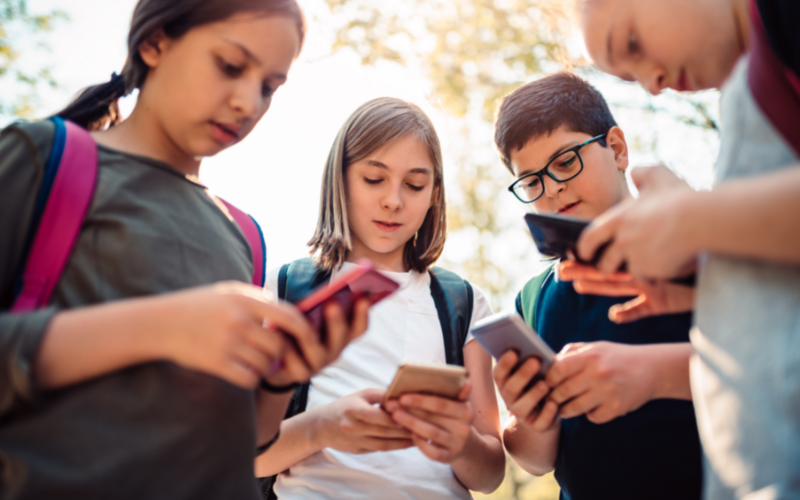Early Smartphone Use Linked to Mental Health Risks in Children: Study Warns of Suicidal Thoughts and Aggression
By: Javid Amin | Srinagar | 21 July 2025
A Wake-Up Call for Digital-Age Parenting
In today’s hyper-connected world, it’s almost a rite of passage for children to receive their first smartphone. But a groundbreaking global study involving over 100,000 participants has sounded the alarm: children who get smartphones before the age of 13 may face higher risks of depression, suicidal thoughts, aggression, and more.
This isn’t a fringe opinion anymore—science is speaking loud and clear. The correlation between early smartphone use and mental health risks is too significant to ignore. Whether you’re a concerned parent, an educator, or a policymaker, this revelation demands urgent attention.
Let’s explore the shocking findings, the science behind them, contributing factors, and most importantly, what we can do to protect our children from the invisible dangers of premature digital exposure.
The Global Study That Changed Everything
A landmark research study led by neuroscientist Dr. Tara Thiagarajan examined the mental health outcomes of more than 100,000 young adults aged 18–24 across 30+ countries. The focus? The age at which individuals received their first smartphone and how it impacted their mental and emotional well-being over time.
Core Findings:
Participants who received their first smartphone at age 12 or younger were far more likely to report:
-
Suicidal thoughts
-
Aggressive behavior
-
Feelings of detachment from reality
-
Difficulty with emotional regulation
-
Low self-worth and confidence
The earlier the exposure, the more severe the symptoms tended to be.
“These mental health symptoms often remain under the radar because they don’t always show up in traditional screening tools,” says Dr. Thiagarajan.
The results suggest that age matters—greatly. The difference of just a year or two can dramatically alter a child’s emotional and psychological trajectory.
The Science Behind Smartphone-Related Mental Health Issues
01. Brain Development in Adolescence
Children’s brains are still developing well into their early twenties. The prefrontal cortex—responsible for impulse control, decision-making, and social behavior—matures last. Early smartphone use can overstimulate this underdeveloped area, leading to long-term changes in emotional regulation and social behavior.
02. The Dopamine Trap
Social media platforms are designed to exploit the brain’s dopamine system. The constant reward cycle from likes, comments, and notifications can lead to addiction-like behavior, reduced attention span, and emotional dependency on digital approval.
03. Sleep Deprivation
Smartphone use, especially before bedtime, interferes with melatonin production and sleep cycles. Chronic sleep disruption in adolescents is directly linked to higher levels of anxiety, depression, and irritability.
04. Information Overload & Cognitive Fatigue
Today’s digital landscape throws enormous volumes of information at users—especially impressionable children. This cognitive overload leads to increased stress, reduced memory retention, and mental exhaustion.
05. Social Comparison & Low Self-Esteem
Platforms like Instagram, TikTok, and Snapchat curate idealized lives. Children and teens are especially vulnerable to toxic comparison, which fuels low self-esteem and identity crises.
The Warning Signs—How Early Exposure Manifests
Let’s take a closer look at the emotional and behavioral symptoms observed in individuals who received smartphones too early in life:
Suicidal Ideation
Children exposed to smartphones before 13 were significantly more likely to report frequent suicidal thoughts by early adulthood, often linked to cyberbullying, social isolation, and poor self-image.
Aggression
Exposure to violent games, online trolling, and unmoderated chatrooms correlates with higher aggression and lower impulse control, particularly in boys.
Dissociation & Detachment
Increased screen time has been tied to depersonalization—a condition where individuals feel detached from themselves or reality.
Emotional Dysregulation
Young smartphone users tend to struggle with recognizing, expressing, and managing emotions, leading to mood swings and social withdrawal.
Low Self-Worth
Excessive dependence on digital validation can stunt the natural development of self-confidence and resilience.
Gender Differences in Impact
The study also revealed distinct differences in how early smartphone exposure affects boys and girls:
For Girls:
-
Reduced emotional resilience
-
Lower self-esteem
-
Increased rates of anxiety and depression
-
Greater exposure to appearance-based social comparison
For Boys:
-
Lower emotional stability
-
Decreased calmness and empathy
-
Greater association with impulsive behavior and online aggression
These gender-specific outcomes highlight the need for tailored prevention strategies.
Key Contributing Factors Beyond the Screen
01. Social Media Exposure
Children under 13 often create accounts on platforms that they technically aren’t allowed to use. Early exposure to these platforms contributes to body image issues, online peer pressure, and cyberbullying.
02. Cyberbullying
Over 60% of children who receive smartphones before age 13 experience some form of cyberbullying, which is closely tied to depression and suicide.
03. Poor Sleep Hygiene
Many children sleep with their phones, waking up to check messages or social media. This sleep disruption leads to daytime fatigue, irritability, and poor academic performance.
04. Strained Family Bonds
The addictive pull of smartphones often replaces face-to-face family interactions. This leads to reduced emotional security and communication within households.
05. Lack of Digital Literacy
Without proper guidance, children are unequipped to critically evaluate what they see online. They may internalize harmful content or fail to distinguish between reality and curated fantasy.
What Experts and Researchers Recommend
01. Restrict Smartphone Access for Children Under 13
Governments should implement and enforce age restrictions, similar to tobacco and alcohol regulations, to delay first-time smartphone ownership.
02. Mandate Digital Literacy Education
Schools should incorporate age-appropriate media literacy programs that teach students to safely and responsibly navigate digital spaces.
03. Reform Mental Health Screenings
Traditional tools often fail to capture the nuanced effects of digital exposure. New methods must integrate digital behavior analysis into screenings.
04. Corporate Accountability
Tech companies must be held accountable for designing addictive features. There should be greater transparency, content regulation, and child-safe design mandates.
Voices From the Ground—Real Stories, Real Impact
-
Ananya, 19, India:
“I got my phone at 11. By 13, I was addicted to social media. I didn’t realize how much it was affecting me until I started having panic attacks over online comments.”
-
Liam, 22, USA:
“Online gaming was fun at first. Then it turned toxic. I started lashing out at family, stopped going out, and my grades plummeted.”
These stories underline the urgency of rethinking digital childhoods.
A Roadmap for Parents
Practical Tips for Protecting Your Child
-
Delay smartphone ownership until age 13 or later
-
Set clear screen-time boundaries
-
Keep devices out of bedrooms at night
-
Engage in open conversations about digital experiences
-
Use parental control tools
-
Encourage offline hobbies and friendships
-
Be a role model for balanced tech use
Time for a Societal Shift
It’s time we treat smartphones not just as tools, but as potential health influencers, much like diet or exercise. Just as you wouldn’t feed a child junk food every day, we mustn’t give them digital candy without limits.
A multi-stakeholder approach involving parents, schools, tech companies, and policymakers is essential to reversing this mental health crisis.
Conclusion—Choose Connection Over Convenience
The data is undeniable: early smartphone use comes with serious mental health risks. But this isn’t just about denying access—it’s about timing, guidance, and responsibility.
Technology isn’t inherently bad. But when placed in unprepared hands too early, it becomes a weapon against the very growth it promises to enhance.
The good news? We can still reverse the trend.
It starts with informed choices, intentional parenting, and a collective will to prioritize real, human connection over convenience.
Summary Checklist
| Risk Factor | Impact | Solution |
|---|---|---|
| Early smartphone access | Suicidal ideation, aggression | Delay ownership until age 13 |
| Sleep disruption | Poor mood, reduced focus | No phones in bedrooms |
| Social media exposure | Low self-worth, anxiety | Supervised, delayed access |
| Cyberbullying | Depression, self-harm risks | Monitor interactions, support |
| Gender-specific issues | Emotional dysregulation, aggression | Tailored mental health support |
| Poor digital literacy | Misinformation, unhealthy behavior | Mandatory digital education |
Final Thoughts
Parenting in the digital age is one of the greatest challenges of our time. But with awareness, boundaries, and proactive policies, we can ensure our children grow up mentally strong, emotionally resilient, and digitally wise.




